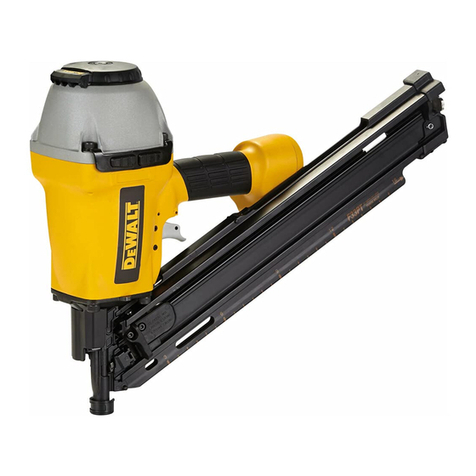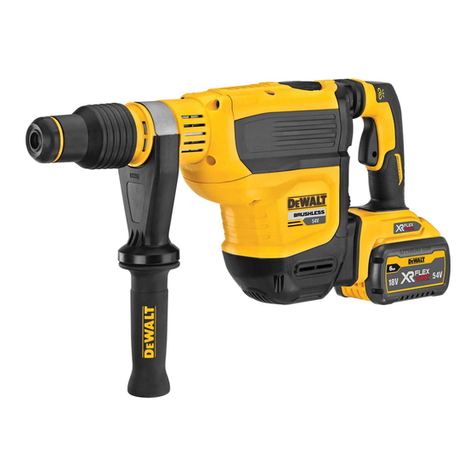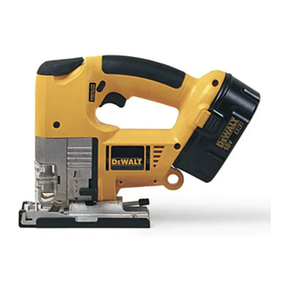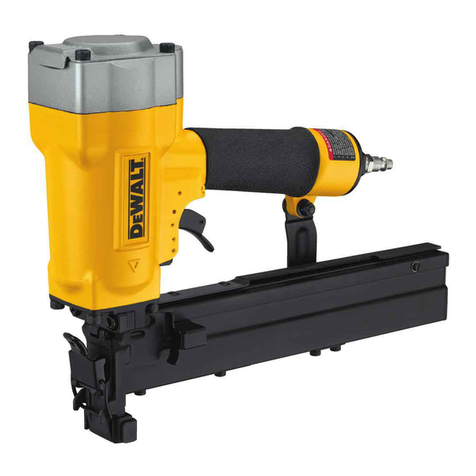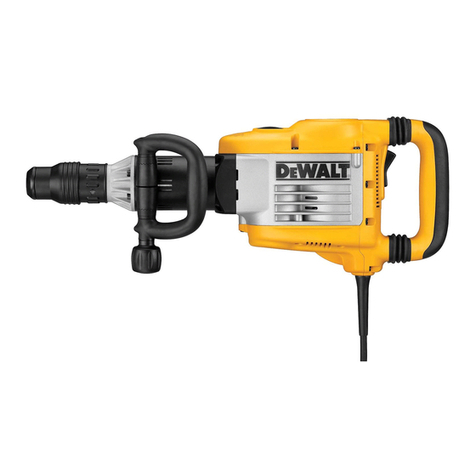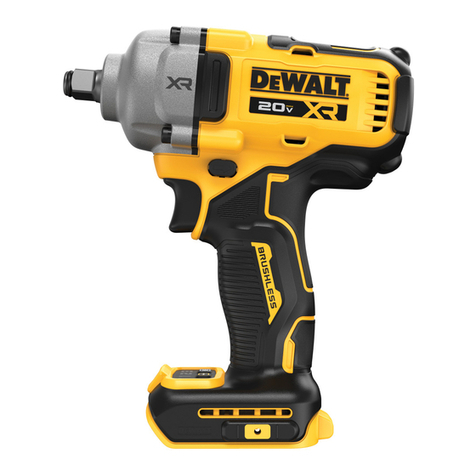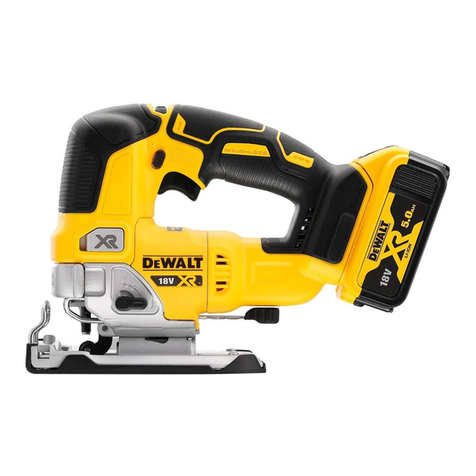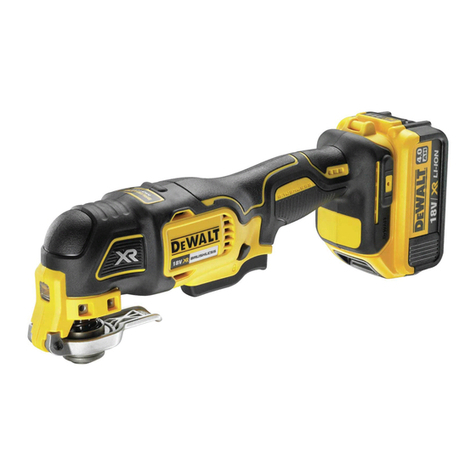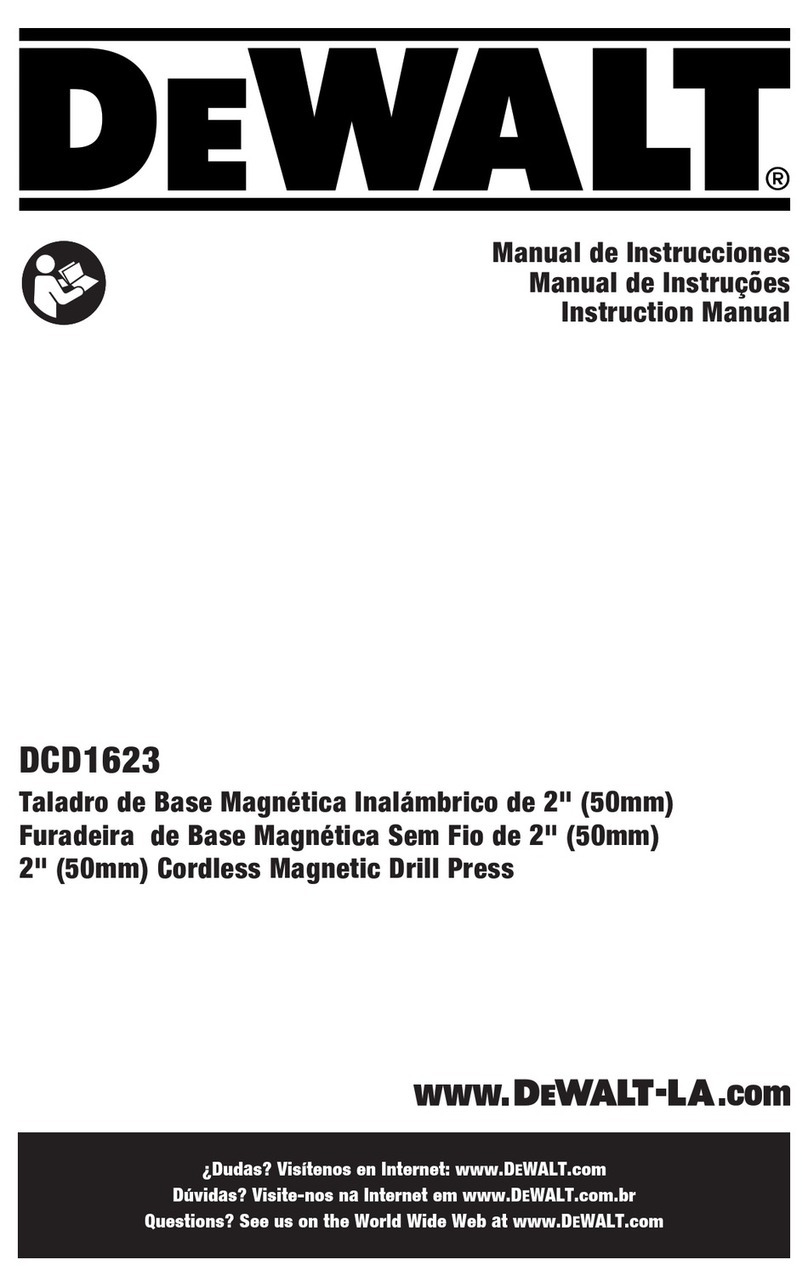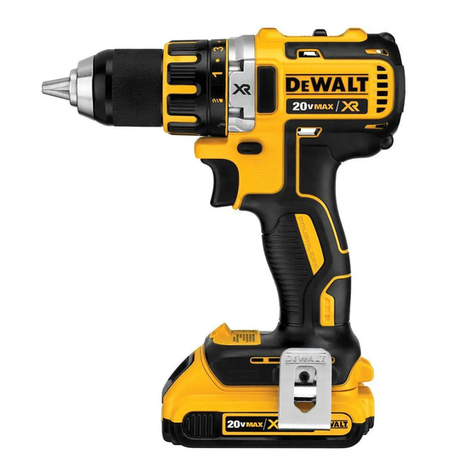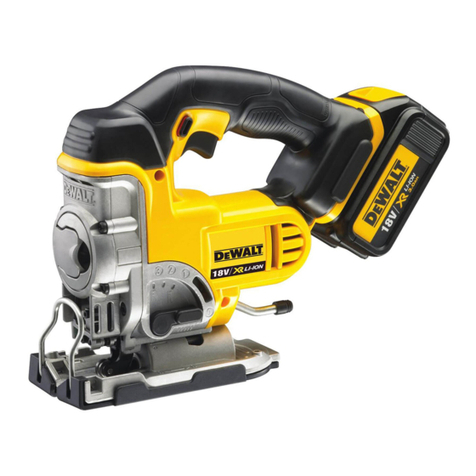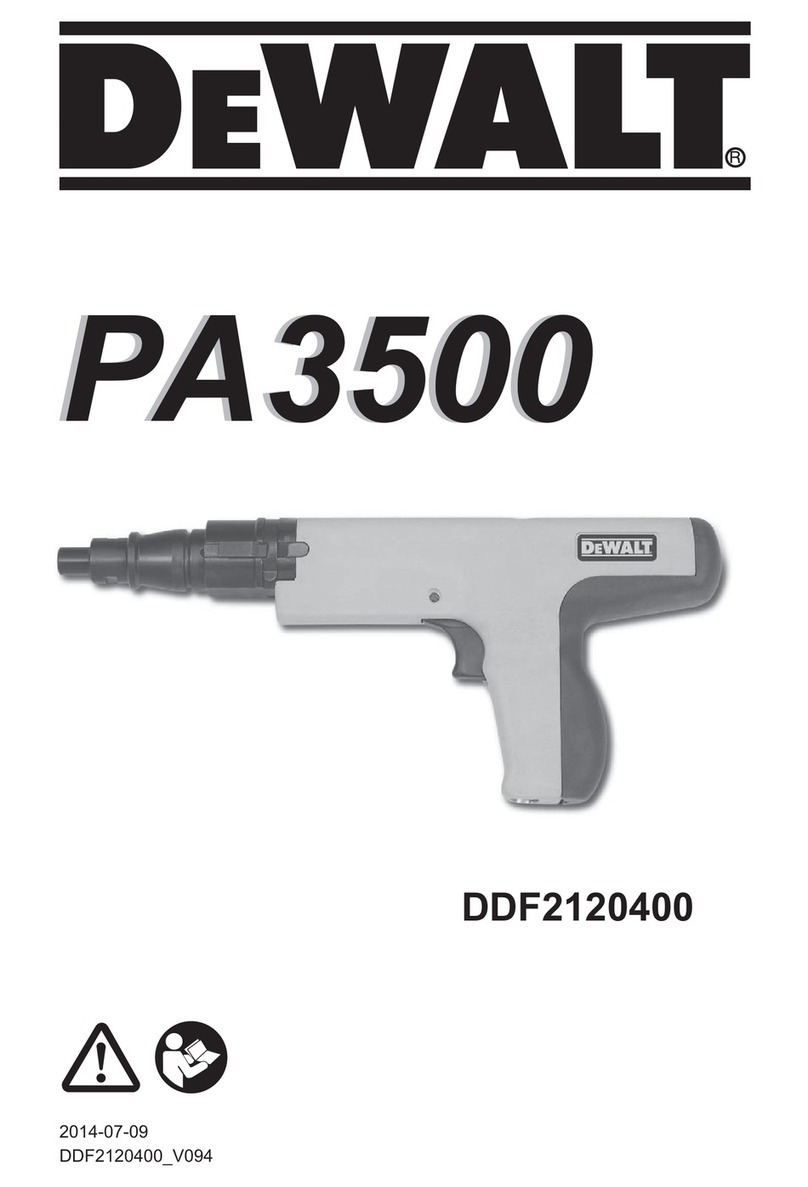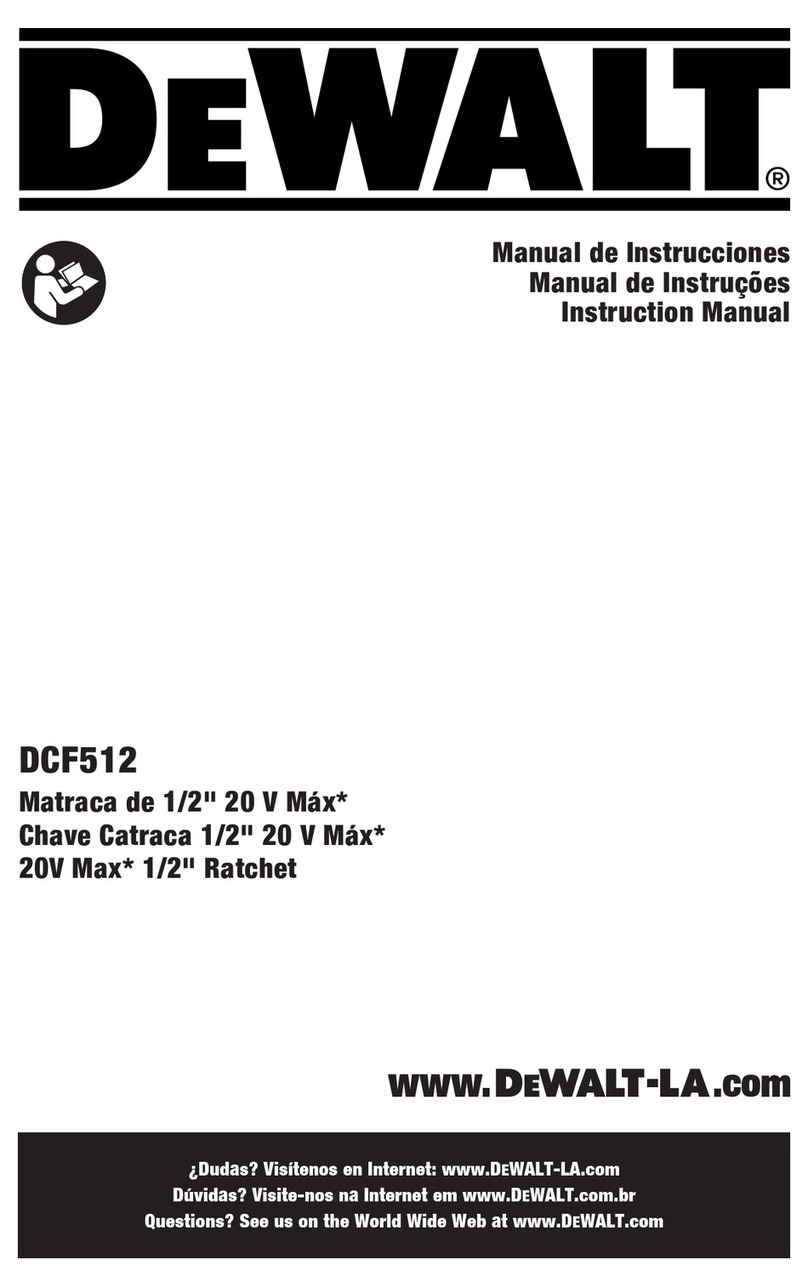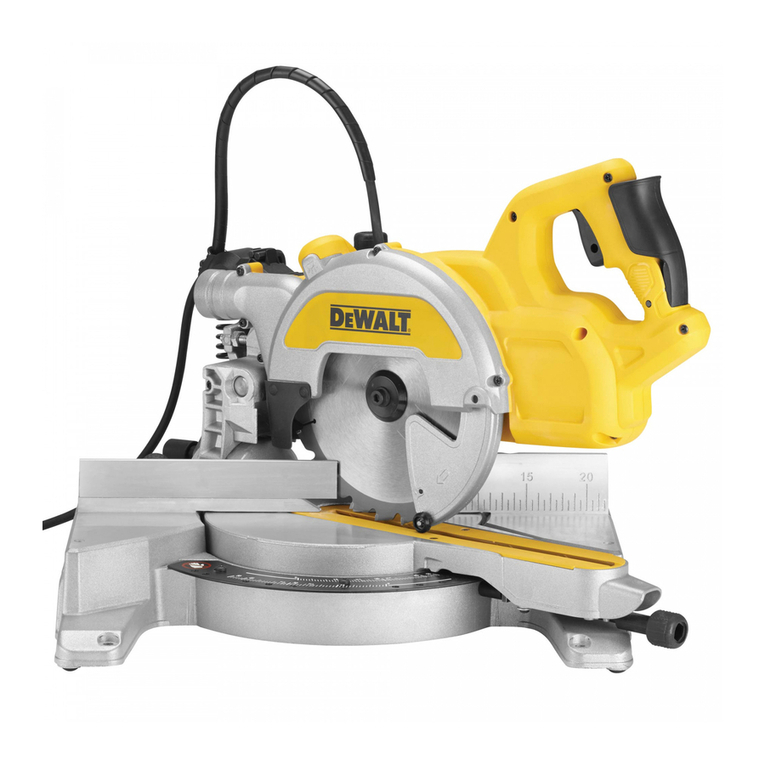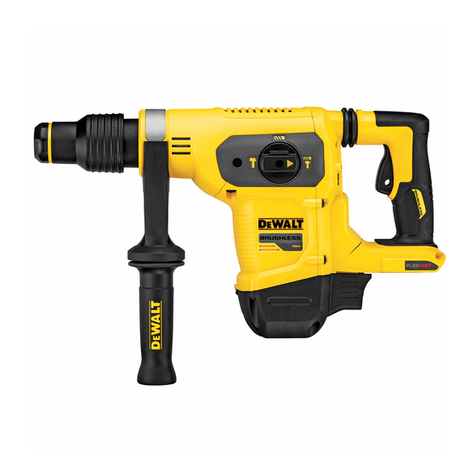
5
ENGLISH
Additional Safety Instructions for
Reciprocating Saws
• Hold power tool by insulated gripping surfaces when
performing an operation where the cutting accessory
may contact hidden wiring. Cutting accessory contacting
a “live” wire will make exposed metal parts of the power tool
“live” and could give the operator an electricshock.
• Use clamps or another practical way to secure and
support the workpiece to a stable platform. Holding the
work by hand or against your body leaves it unstable and may
lead to loss of control.
• ALWAYS wear a dust mask. Exposure to dust particles can
cause breathing difficulty and possibleinjury.
• Never switch on the tool when the saw blade is jammed in the
workpiece or in contact with thematerial.
• Keep hands away from moving parts. Never place your
hands near the cuttingarea.
• Use extra caution when cutting overhead and pay
particular attention to overhead wires which may be
hidden from view. Anticipate the path of falling branches
and debris ahead oftime.
• Do not operate this tool for long periods of time.
Vibration caused by the operating action of this tool may
cause permanent injury to fingers, hands, and arms. Use
gloves to provide extra cushion, take frequent rest periods, and
limit daily time ofuse.
Switching On and Off
• After switching off, never attempt to stop the saw blade with
yourfingers.
• Never put the saw down on a table or work bench unless
switched off. The saw blade will keep running briefly after the
tool has been switchedoff.
When Sawing
• When using saw blades specially designed for cutting wood
remove all nails and metal objects from the workpiece before
startingwork.
• Wherever possible, use clamps and vices to fasten the
workpiecesecurely.
• Do not attempt to saw extremely smallworkpieces.
• Do not bend too far forward. Make sure that you always stand
firmly, particularly on scaffolding andladders.
• Always hold the saw with bothhands.
• For cutting curves and pockets, use an adapted sawblade.
the power tool before making any adjustments,
changing accessories, or storing power tools. Such
preventive safety measures reduce the risk of starting the
power toolaccidentally.
d ) Store idle power tools out of the reach of children
and do not allow persons unfamiliar with the power
tool or these instructions to operate the power tool.
Power tools are dangerous in the hands of untrainedusers.
e ) Maintain power tools and accessories. Check for
misalignment or binding of moving parts, breakage
of parts and any other condition that may affect the
power tool’s operation. If damaged, have the power
tool repaired before use. Many accidents are caused by
poorly maintained powertools.
f ) Keep cutting tools sharp and clean. Properly
maintained cutting tools with sharp cutting edges are less
likely to bind and are easier tocontrol.
g ) Use the power tool, accessories and tool bits etc.
in accordance with these instructions, taking into
account the working conditions and the work to be
performed. Use of the power tool for operations different
from those intended could result in a hazardoussituation.
h ) Keep handles and grasping surfaces dry, clean and
free from oil and grease. Slippery handles and grasping
surfaces do not allow for safe handling and control of the
tool in unexpectedsituations.
5) Battery Tool Use and Care
a ) Recharge only with the charger specified by the
manufacturer. A charger that is suitable for one type
of battery pack may create a risk of fire when used with
another batterypack.
b ) Use power tools only with specifically designated
battery packs. Use of any other battery packs may create
a risk of injury andfire.
c ) When battery pack is not in use, keep it away from
other metal objects, like paper clips, coins, keys,
nails, screws or other small metal objects, that can
make a connection from one terminal to another.
Shorting the battery terminals together may cause burns
or afire.
d ) Under abusive conditions, liquid may be ejected
from the battery; avoid contact. If contact
accidentally occurs, flush with water. If liquid
contacts eyes, additionally seek medical help. Liquid
ejected from the battery may cause irritation orburns.
e ) Do not use a battery pack or tool that is damaged
or modified. Damaged or modified batteries may exhibit
unpredictable behaviour resulting in fire, explosion or risk
of injury.
f ) Do not expose a battery pack or tool to fire or
excessive temperature. Exposure to fire or temperature
above 130 °C may causeexplosion.
g ) Follow all charging instructions and do not charge
the battery pack or tool outside the temperature
range specified in the instructions. Charging
improperly or at temperatures outside the specified range
may damage the battery and increase the risk of fire.
6) Service
a ) Have your power tool serviced by a qualified repair
person using only identical replacement parts. This
will ensure that the safety of the power tool is maintained.
b ) Never service damaged battery packs. Service
of battery packs should only be performed by the
manufacturer or authorized service providers.
